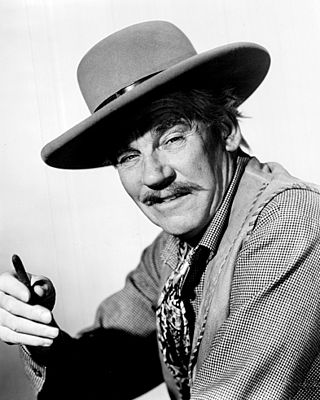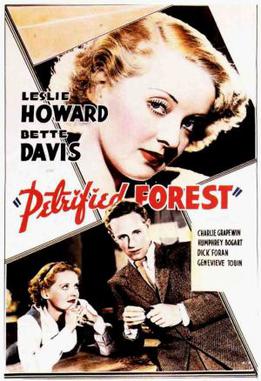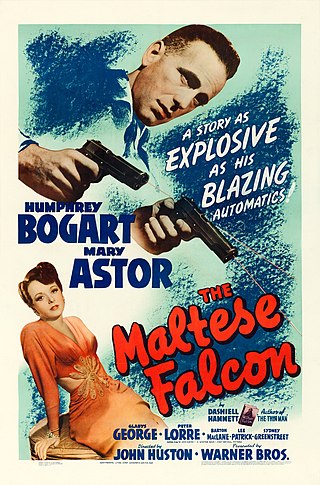
Humphrey DeForest Bogart, colloquially nicknamed Bogie, was an American actor. His performances in classic Hollywood cinema films made him an American cultural icon. In 1999, the American Film Institute selected Bogart as the greatest male star of classic American cinema.

John Marcellus Huston was an American film director, screenwriter and actor. He wrote the screenplays for most of the 37 feature films he directed, many of which are today considered classics. He received numerous accolades including two Academy Awards and three Golden Globe Awards. He also received a star on the Hollywood Walk of Fame in 1960 and the BAFTA Fellowship in 1980.

Casablanca is a 1942 American romantic drama film directed by Michael Curtiz and starring Humphrey Bogart, Ingrid Bergman, and Paul Henreid. Filmed and set during World War II, it focuses on an American expatriate (Bogart) who must choose between his love for a woman (Bergman) and helping her husband (Henreid), a Czechoslovak resistance leader, escape from the Vichy-controlled city of Casablanca to continue his fight against the Germans. The screenplay is based on Everybody Comes to Rick's, an unproduced stage play by Murray Burnett and Joan Alison. The supporting cast features Claude Rains, Conrad Veidt, Sydney Greenstreet, Peter Lorre, and Dooley Wilson.

Peter Lorre was a Hungarian and American actor, active first in Europe and later in the United States. He began his stage career in Vienna, in the Austro-Hungarian Empire, before moving to Germany where he worked first on the stage, then in film in Berlin in the late 1920s and early 1930s. Lorre caused an international sensation in the Weimar Republic-era film M (1931), directed by Fritz Lang, in which he portrayed a serial killer who preys on little girls. Known for his timidly devious characters, his appearance, and his accented voice, Lorre was frequently caricaturized during and after his lifetime and the cultural legacy of his persona remains in media today.

The Caine Mutiny is a 1954 American military trial film directed by Edward Dmytryk, produced by Stanley Kramer, and starring Humphrey Bogart, José Ferrer, Van Johnson, Robert Francis, and Fred MacMurray. It is based on Herman Wouk's Pulitzer Prize-winning 1951 novel of the same name.

The African Queen is a 1951 adventure film adapted from the 1935 novel of the same name by C. S. Forester. The film was directed by John Huston and produced by Sam Spiegel and John Woolf. The screenplay was adapted by James Agee, John Huston, John Collier and Peter Viertel. It was photographed in Technicolor by Jack Cardiff and has a music score by Allan Gray. The film stars Humphrey Bogart and Katharine Hepburn with Robert Morley, Peter Bull, Walter Gotell, Richard Marner and Theodore Bikel.

Walter Thomas Huston was a Canadian actor and singer. Huston won the Academy Award for Best Supporting Actor for his role in The Treasure of the Sierra Madre, directed by his son John Huston. He is the patriarch of the four generations of the Huston acting family, including his son John, grandchildren Anjelica Huston and Danny Huston, as well as great-grandchild Jack Huston. The family has produced three generations of Academy Award winners: Walter, his son John, and granddaughter Anjelica.
The year 1938 in film involved some significant events.

Betty Joan Perske, professionally known as Lauren Bacall, was an American actress. She was named the 20th-greatest female star of classic Hollywood cinema by the American Film Institute and received an Academy Honorary Award from the Academy of Motion Picture Arts and Sciences in 2009 in recognition of her contribution to the Golden Age of motion pictures. She was known for her alluring, sultry presence and her distinctive, husky voice. Bacall was one of the last surviving major stars from the Golden Age of Hollywood cinema.

Luigia "Gina" LollobrigidaOMRI was an Italian actress, model, photojournalist, artist and politician. She was one of the highest-profile European actresses of the 1950s and 1960s, a period in which she was an international sex symbol. Dubbed "the most beautiful woman in the world", at the time of her death she was among the last surviving high-profile international actors from the Golden Age of Hollywood cinema.

The Petrified Forest is a 1936 American crime drama film directed by Archie Mayo and based on Robert E. Sherwood's 1934 drama of the same name. The motion picture stars Leslie Howard, Bette Davis and Humphrey Bogart. The screenplay was written by Delmer Daves and Charles Kenyon, and adaptations were later performed on radio and television. The film is set in Petrified Forest National Park in Arizona.

Mayo Jane Methot was an American film and stage actress. She appeared in over 30 films, as well as in various Broadway productions, and she attracted significant media attention for her tempestuous marriage to actor Humphrey Bogart.

In a Lonely Place is a 1950 American film noir directed by Nicholas Ray and starring Humphrey Bogart and Gloria Grahame, produced for Bogart's Santana Productions. The script was written by Andrew P. Solt from Edmund H. North's adaptation of Dorothy B. Hughes' 1947 novel of the same name.

Ravello is a town and comune situated above the Amalfi Coast in the province of Salerno, Campania, Southern Italy, with approximately 2,500 inhabitants. Its scenic location makes it a popular tourist destination, and earned it a listing as a UNESCO World Heritage Site in 1997.

Elisha Vanslyck Cook Jr. was an American character actor famed for his work in films noir. According to Bill Georgaris of They Shoot Pictures, Don't They, Cook appeared in a total of 21 films noir, more than any other actor or actress. He played cheerful, brainy collegiates until he was cast against type as the bug-eyed baby-faced psychopathic killer Wilmer Cook in the 1941 version of The Maltese Falcon. He went on to play deceptively mild-mannered villains. Cook's acting career spanned more than 60 years, with roles in productions including The Big Sleep, Shane, The Killing, House on Haunted Hill, and Rosemary's Baby.

Barton MacLane was an American actor, playwright, and screenwriter. He appeared in many classic films from the 1930s through the 1960s, including his role as General Martin Peterson on the 1960s NBC television comedy series I Dream of Jeannie, with Barbara Eden and Larry Hagman.

The Maltese Falcon is a 1941 American film noir in which a San Francisco private detective deals with three unscrupulous adventurers, all seeking a jewel-encrusted falcon statuette. Written and directed by John Huston in his directorial debut, the film was based on the 1930 novel The Maltese Falcon by Dashiell Hammett and is a remake of the 1931 film of the same name. It stars Humphrey Bogart as private investigator Sam Spade, Mary Astor as his femme fatale client, and as villains Peter Lorre and Sydney Greenstreet.

Villa Cimbrone is a historic villa in Ravello, on the Amalfi Coast of southern Italy. Dating from at least the 11th century, it is famous for its scenic belvedere, the Terrazza dell'Infinito.

Ivor Barnard was an English stage, radio and film actor. He was an original member of the Birmingham Repertory Theatre, where he was a notable Shylock and Caliban. He was the original Water Rat in the first London production of A. A. Milne's "Toad of Toad Hall". In 1929 he appeared on stage as Blanquet, in "Bird in Hand" at the Morosco Theatre in New York, after a successful run in London's West End. The part had been specially written for him by John Drinkwater.
Eric Gray was a stills photographer whose work was featured in Picture Post. His career was mainly in the British film industry and it was based on two Anthony Asquith pictures, Shooting Stars and A Cottage on Dartmoor (1929), that his reputation began to emerge. During this period stills were normally etched with his signature written in an art deco style.



















